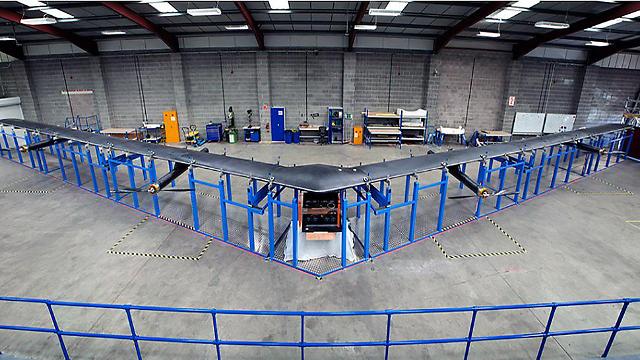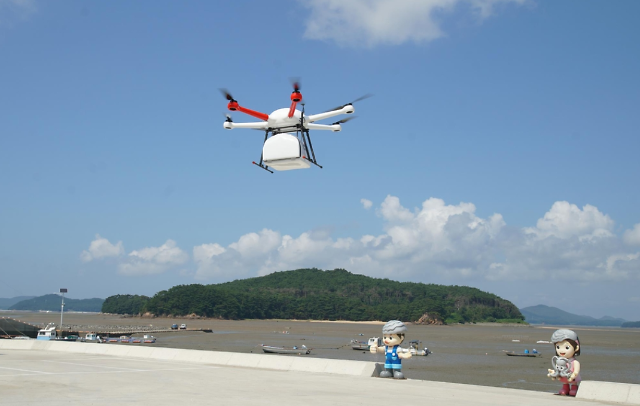
Aquila, the gigantic drone of Facebook, is getting ready for its test flight [Curteosy of Facebook]
Gigantic solar powered drone engineered by Facebook is getting ready for its test flight. “Aquila”, its appearance resembling U.S. air force’s B-2 stealth bomber, is scheduled to take a series of test flights in December. Its role is to provide internet to rural areas and developing countries.
Aquila, its wingspan of 42 meters, may stay up in the air without landing for a maximum of three months. It uses a laser beam to link with ground base stations and other Aquila drones in flight.
The drone project of Facebook takes on a similar role as “Project Loon”, Google’s wireless internet providing balloons. But Aquila can fly to a designated position, covering an area of three kilometers maximum, in a wide circling motion. It will climb to its maximum height (27 kilometers) during daytime and it will gradually descend to its lowest (18 kilometers) at night to conserve power.
Since the drone is flying in such a high altitude, it will not be affected by weather conditions. Except wireless internet signals, which may get disarrayed by environmental situations.
A year ago, Facebook launched “Internet.org” project. Its goal is to provide access to internet for 4.6 billion people, which is two-thirds of the world’s population who live their lives without internet. Facebook ran the test of its service in various countries such as India but was faced with criticism because usage of internet was limited, leaving specific URLs and services blocked.
Facebook plans to fulfill the free internet or the very low-cost internet, affordable for everyone with Aquila project. To avoid further criticism, Facebook stated that the social media will not be dealing with customers directly. Instead, it will start partnering with Internet Service Providers (ISP) to offer its services.
Jay Parikh, Facebook’s vice-president of engineering, said, “Our mission is to connect everybody in the world. This is going to be a great opportunity for us to motivate the industry to move faster on this technology.”
Since Aquila does not have the ability to take off, it will be pulled up to its cruising altitude by helium balloons. But how the drone will land after its test flight is unknown because it lacks wheels and application of any other forms of landing gear are unknown.
아주경제 박세진 기자 = swatchsjp@ajunews.com




